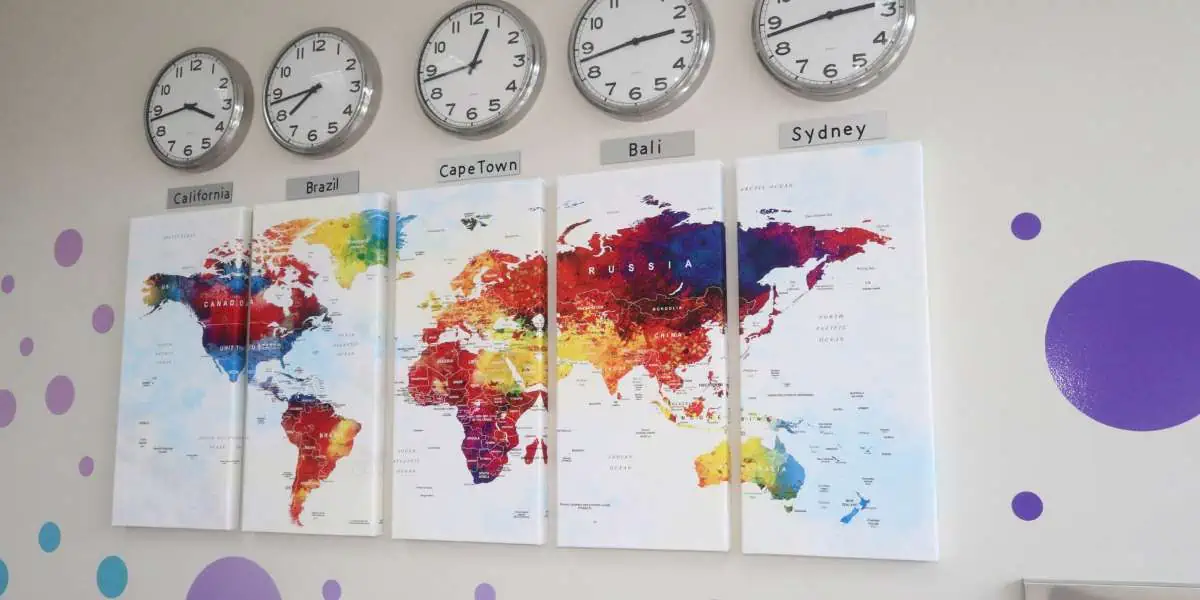Global business brings teams together across continents. With remote work becoming the norm, managing time zones is more important than ever. For collaborations involving Thailand specifically, grasping the unique time zone situation allows for smoother coordination.
Demystifying Thailand’s Time Zone
Many assume all of Southeast Asia shares time zones. However, Thailand follows Indochina Time (ICT) which is 7 hours ahead of GMT and does not observe Daylight Savings.
How the Thai time zone impacts global teamwork:
- Bangkok is 12 hours ahead of New York, meaning a 9 AM Monday call for you is 9 PM Sunday night for Thai teams.
- Thailand’s time stays consistent year-round, unlike regions that follow DST like Europe and most of the US.
- The 12-hour gap with the Americas and Europe underlines the need to map workflows carefully around time zones.
Key time differences between Bangkok and global business hubs:
| Region | Time Difference with Thailand |
|---|---|
| US Pacific Time | -15 hours |
| US Eastern Time | -12 hours |
| UK/Europe (GMT+1) | -6 hours |
| India | -1.5 hours |
| China | -1 hour |
| Australia East Coast | +1 hour |
As shown, Thailand is roughly a quarter of a day off from both American coasts. This can disrupt collaboration if not handled intentionally.
Strategies for Cross-Time Zone Workflows
Smooth coordination with Thai teams despite the 12-hour gap is very possible. It takes forethought and the willingness to vary normal schedules.
Use Scheduling Tools
Apps like Calendly and Doodle allow easy visibility into team availability across time zones and are vital for the fluid scheduling global work demands.
Define Core Overlap Hours
Establish at least a 3-4 hour block every day where teams align schedules for meetings and questions. For Thailand, 11 AM – 3 PM Bangkok time tends to work for intersecting with American teams.
Leverage Asynchronous Communication
Minimize real-time demands by using tools like Slack, Trello, GitHub, shared docs, etc. for updates. This allows work to happen despite time differences.
Be Conscious of Time Zone Impacts
Always indicate relevant time zones when scheduling across regions. Avoid last-minute meeting requests that disregard reasonable working hours in the recipient’s time zone.
Optimizing Work Habits for Productivity
Building sustainable work rhythms is also key when managing global teams. Some best practices include:
- Front-load Focus Work: Use mornings/early evenings in each time zone for heads-down work when fewer meetings are likely scheduled.
- Create Calendared Breaks: Ensure breaks are cemented into schedules. Disconnect completely during these blocks.
- Build Time Zone Shifts: If meetings regularly happen outside your region’s work hours, discuss with teams the possibility of starting/ending days earlier or later.
- Automate Reminders: Use calendar notifications for upcoming meetings to avoid losing track of time when engrossed in work.
Maintaining Healthy Work-Life Balance
Alongside delivering value efficiently, effective global collaboration must prioritize employee health and wellbeing:
- Set Boundaries: Prevent burnout by being clear on what can be achieved within reasonable work hours. Pushing unaligned extended hours daily leads to rapid fatigue.
- Schedule Recuperation: Build 2-3 day recuperative breaks between intense stretches of inconvenient meetings to allow people to catch up on sleep/life.
- Enable Informal Bonds: Create opportunities, even virtually, for people to interact socially across regions. This enhances cultural fluency and mental health.
With some planning, communication, empathy, and respect for each person’s context – it is entirely possible to build well-oiled global teams! Use these tips when collaborating across continents to overcome the barriers of time zone alignment.
Common Cross-Time Zone Communication Pitfalls
Despite good intentions, collaboration across distant time zones comes with unique relationship challenges that can unintentionally emerge:
Assuming 24/7 Availability
With some team members available earlier or later in the day than others, it’s tempting to extend work hours. This leads to fatigue and resentment long term. **Set agreed upon
regional business hours and stick to them.**
Disregard for Cultural Nuances
Humor, etiquette around hierarchy and deadlines etc. vary by region. Build a level of cultural awareness through research and conversations. Don’t make assumptions or assign intentional rudeness to misunderstood social cues.
Lack of Effort to Find Common Times
Finding mutually convenient times for meetings requires compromise from everyone involved. If only one sub-group continuously compromises sleep schedules, assessment of priorities is needed.
Absence of Informal Interaction
Isolated task-based conversation without any social connection feeds a toxic divide between internal teams vs external collaborators. Leaders should foster informal virtual coffee breaks or small talk channels.
Tips to Build Trust and Camaraderie
Here are some ways regional sub-groups can enhance their strategic alignment and interpersonal ties:
Share Local Context Stories and Images: Hearing about daily environment and sights gives perspective into each other’s worlds, building empathy.
Rotate Meeting Times: Don’t always demand the same team adjust their schedule – showcase equal willingness to accommodate based on project needs.
Create a Team Ritual: Friday virtual lunches, a weekly progress check-in call, or a monthly awards ceremony held jointly helps teams engage socially.
Send Physical Gift Packages: Mail regional snack boxes or personalized welcome packages when people join projects – tangible gestures build connection.
Reviewing Progress and Continual Improvement
In rapidly evolving global collaboration contexts, continue to:
Solicit Regular Anonymous Feedback: Create safe spaces for people, especially junior members, to share areas of friction or improvement without judgment.
Revisit Working Guidelines Quarterly: As situations change through the year, review if original team agreements on communication norms need to adapt.
Keep Exploring New Tools: New software and virtual meeting enhancements are enabling richer remote experiences. Stay on top of innovations that could help cross-regional teams.
With some care and planning, cross-continental work coordination can truly achieve remarkable outcomes! Use these tips and warnings when managing projects across time zones.




